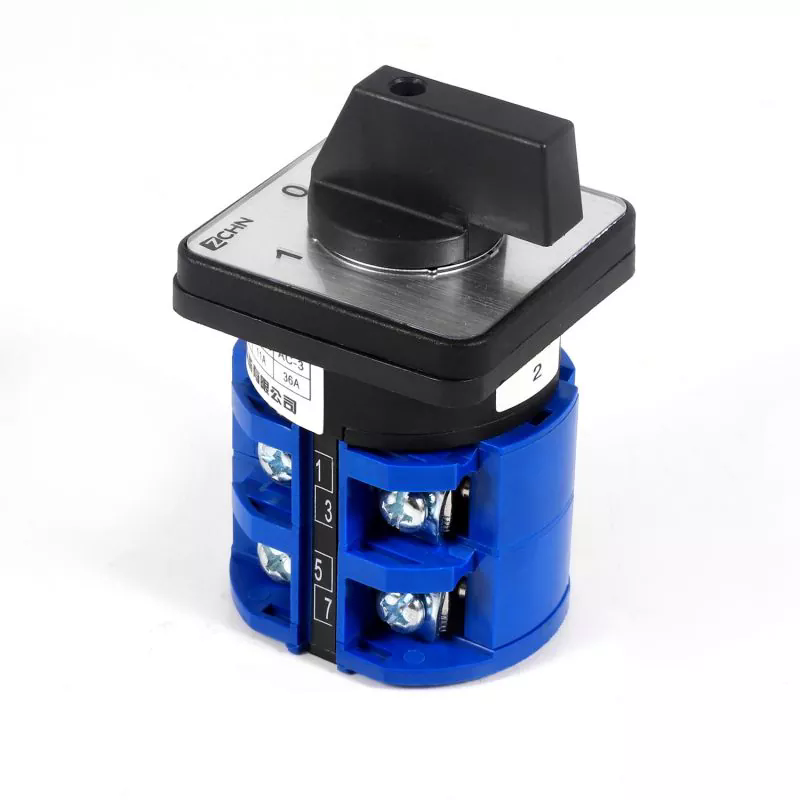What Is an Isolator Switch and Why is it Important in Electrical Systems?
2024-11-13
In any electrical system, safety is paramount, and one of the most essential safety components is the isolator switch. Whether you’re dealing with residential, commercial, or industrial applications, the isolator switch plays a crucial role in ensuring that electrical circuits are safely turned off during maintenance or emergencies. But what exactly is an isolator switch, and why is it so important in electrical installations?
What is an Isolator Switch?
An isolator switch, also known as an isolation switch or disconnect switch, is a device used to completely isolate a part of an electrical system from the main power supply. This switch is designed to ensure that electrical circuits can be safely de-energized, allowing for safe maintenance, repair, or service work on electrical equipment.
Unlike circuit breakers, which are designed to automatically interrupt the circuit in case of an overload or fault, isolator switches are manually operated and serve as a way to physically disconnect a circuit from its power source. This means that power can be fully cut off to prevent any electrical hazards while workers perform maintenance or repairs.
How Does an Isolator Switch Work?
The isolator switch works by creating an open circuit between the power source and the electrical load, ensuring that no electricity flows through the system during servicing. Typically, isolator switches are installed in locations where equipment needs to be fully isolated from power, such as near circuit breakers, transformers, or individual machines.
When the isolator switch is operated, it physically disconnects the electrical supply, providing a clear separation between the live parts of the system and the components being worked on. This action is usually visual, providing confirmation that the system is indeed isolated from the power source.
Key Features of Isolator Switches
1. Manual Operation
Isolator switches are typically operated manually, allowing the user to physically disconnect the power supply. This is different from automatic switches, which trigger when they detect faults in the circuit.
2. Clear Visual Indication
Many isolator switches come with a clear visual indicator to show whether the circuit is open or closed. This feature enhances safety by providing workers with confirmation that the system is indeed isolated.
3. Versatile Applications
Isolator switches are used in various settings, including residential electrical systems, industrial machines, solar power systems, and electrical substations. Their versatile nature makes them essential in many different contexts.
4. High Voltage and Current Capacity
Some isolator switches are designed to handle high voltage and current levels, ensuring they can isolate large or industrial-scale electrical systems without compromising safety.
Why is an Isolator Switch Important?
1. Enhanced Safety
The primary purpose of an isolator switch is to enhance safety. When servicing electrical equipment, it is crucial that workers are protected from electrical shocks or short circuits. The isolator switch ensures that the electrical system is completely powered down, minimizing the risk of accidents.
2. Preventing Equipment Damage
In addition to protecting workers, an isolator switch also helps prevent damage to sensitive electrical equipment. By isolating power to machines or systems during maintenance, the risk of electrical surges or short circuits that could cause equipment malfunction or damage is greatly reduced.
3. Complying with Regulations
In many jurisdictions, safety regulations require that isolator switches be installed as part of electrical systems. These regulations are in place to protect workers and ensure that maintenance can be performed safely without risking electrical hazards.
4. Emergency Shutdown
In the event of an emergency, isolator switches allow for a quick and safe shutdown of the electrical system. This is particularly important in industrial or commercial settings where large-scale electrical systems may need to be disconnected rapidly to prevent further damage or risk.
Types of Isolator Switches
1. Manual Isolators
These are the most common type of isolator switch, typically found in residential and industrial settings. They are operated by hand, and the operator physically turns the switch to disconnect the power supply.
2. Motorized Isolators
Motorized isolators are typically used in larger systems where manual operation is impractical or dangerous. These switches are electrically operated, allowing for remote control and automation of the isolation process.
3. Fuse Isolators
Fuse isolators combine the functionality of a fuse and an isolator switch. These are typically used in electrical circuits to isolate a faulty circuit while providing protection against overloads or short circuits.
4. Rotary Isolators
Rotary isolators are often used in environments where space is limited or when a compact, durable switch is needed. These switches are turned by a rotary handle and can provide reliable isolation in harsh conditions.
How to Choose the Right Isolator Switch?
Selecting the appropriate isolator switch for your needs depends on several factors:
1. Voltage and Current Ratings
It’s important to choose an isolator switch that can handle the voltage and current levels of your electrical system. Always ensure that the isolator switch is rated for the maximum electrical load it will need to isolate.
2. Type of System
Consider the specific system in which the isolator will be used. For example, a solar power system may require a different type of isolator switch compared to an industrial machine or residential power distribution panel.
3. Location and Accessibility
Consider the installation location of the isolator switch. It should be easily accessible for users during maintenance, and it may need to be positioned in accordance with safety regulations.
4. Durability and Reliability
Choose an isolator switch that is built to withstand the environmental conditions of your installation. Some isolators are designed for use in outdoor environments or in areas with extreme temperatures, so durability is an essential factor.
Conclusion
An isolator switch is a vital component in any electrical system, offering essential safety features that allow workers to safely isolate parts of a system for maintenance or repair. By understanding the importance of isolator switches and choosing the right type for your application, you can enhance the safety, reliability, and longevity of your electrical systems. Whether you're working on residential, commercial, or industrial projects, the isolator switch remains a fundamental safety tool that protects both people and equipment from electrical hazards.



